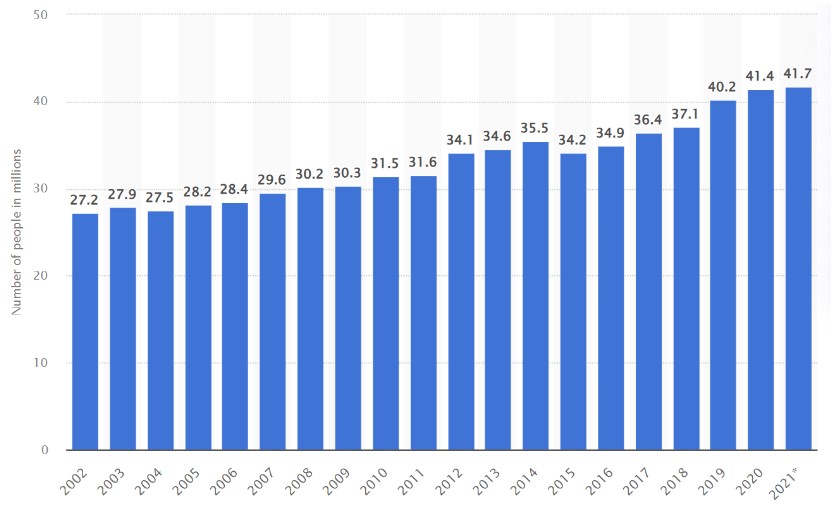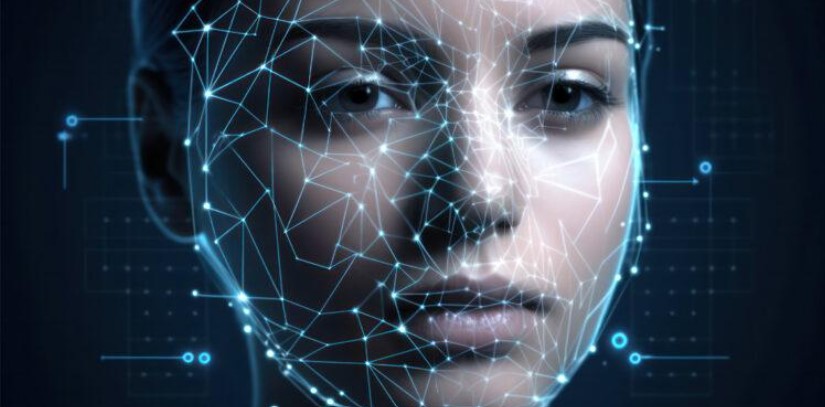Introduction
Psychology is a well-respected field of science and, dare we say, essential for the well-being of many people. Since 2002, the number of US citizens who received mental health treatment or counselling has increased by almost 50% (Mental health treatment or therapy among American adults 2002-2021). At the same time, 30% of people with depression do not seek any kind of treatment (30 Percent of Depressed People Do Not Receive Treatment, Psychology Today United Kingdom). A few decades ago, seeking treatment was perceived as being problematic. Although this is no longer the case, at least in modern countries, therapy can require many resources that people might not have access to. In any case, there are deterrent factors that prevent people from seeking help. However, this does not mean that a solution cannot be found. Let’s look at how AI can be added to our arsenal of medical solutions to heal the soul.

If you Get to Know me Better
Today, going to a therapist couldn’t be easier. Just book an appointment online and schedule your first session. At first, the therapist needs to learn about the patient to build his ‘profile’. Usually, the focus is on milestones in the patient’s life or points that had a serious impact on them. Although this is important, depending on how open the patient is for discussion, it can take weeks or even months until the patient’s profile is built!
Now you See me
Computer Vision (CV) has already been praised for its potential to benefit many fields and psychology is no exception. Face recognition algorithms can greatly assist in analysing an individual’s facial expressions. Human facial expressions are one of the most important non-verbal ways to communicate. Our faces have 43 different muscles, and it is estimated that we can make more than 10000 different expressions. Although humans may have difficulty sharing their emotions with others, this does not mean they can’t share them on a screen. Facial expressions can be essential to draw safe conclusions about some cognitive patterns, reading ‘behind the lines’ of what is said. Face expression recognition could be of great value to psychologists. Through Edge-Computing, localising the necessary hardware would allow for data processing at even higher speeds than those offered by cloud services, an excellent choice for large psychology centres that are visited by thousands of people each day.

Hear me Out
Words can lie, and facial expressions can deceive you. What other options does a therapist have? The voice! Natural Language Processing (NLP) algorithms are AI algorithms that can extract crucial information from one’s speech regarding one’s behaviour or psychological state. NLPs can not only draw conclusions about someone’s interests, but they can also indicate the words that were stressed and what the speaker’s feelings were, through voice tone recognition protocols. Similarly to CV, NLP technologies can be beneficial for large psychology centres. Centres, apart from edge computing, can also benefit from the Internet of Things (IoT) if they have more than one branch. The IoT can connect the databases of those centres for cross-data checking to improve the performance of the AI algorithms in use.

A Friend in Need is a Friend in Deed
What would happen if we took a CV algorithm and combined its power with an NLP model? Our personal AI psychologist! Many people wish to express their true thoughts with people who are complete strangers to them, not to mention that most people feel safer or less exposed behind a computer screen. Chatbots have revolutionised the way we interact with some websites or solve some problems. Take this chatbot, make it smarter with Generative AI, and there you have it! Your private AI psychologist, capable of making true discussions, analysing your speech and facial expressions, and reaching safe conclusions that it can express and you can make use of!
Is that all?
Of course, what we have mentioned so far does not only concern therapists. Evaluation of the psychological state of an individual can be essential in other fields, such as criminology. Law enforcement agencies use what is called ‘Offender Profiling’ to identify possible suspects and link cases. This profiling is usually made manually, or through the help of some elementary algorithms that still need human input. We are no experts in law enforcement, but we bet the professionals would like to have a machine do this for them by combining all factors, even the tiny details. Guess what… AI offender profiling and forensics is already happening! Complex algorithms are already being developed and used by law enforcement to make the necessary connections between crime scenes and individuals, or to state areas as potentially in the risk of crime. Such algorithms use GPU acceleration to boost their efficiency, as, to achieve optimal results, the data can sometimes be overwhelming for a simple computer.
Another application of psychological assesment is medicine, but probably not as you think. Lifted spirits are a key factor in the treatment of many cases, such as different forms of cancer. In addition to that, feeling good and relaxed can be a game changer for patients preparing for surgery by increasing success odds and reducing postoperative recovery time. Talking about medicine… what if we told you that our psychology is determined by our body chemistry?

Psyche vs Soma
How our body functions is a very delicate process determined by our genes, and it can have a direct impact on our soul. Proteins are the key to all our feelings. We fall in love, we get angry, we feel pain. Everything is a matter of protein synthesis. Proteins are essential for the growth, plasticity, and maintenance of neurones, a cell type responsible for sending messages throughout our body. Damage to neurons can bring terrible results to how we interact with our environment and close ones. However, this does not necessarily mean that the neurone itself is damaged. The release of proteins around neurons can have devastating effects on our perception. Maybe the term ‘Alzheimer’s disease’ will ring some bells.
Pick my Brain
This disease is characterised by deposits of certain proteins that cause changes in the brain, causing it to shrink and brain cells to eventually die. Being the most common cause of dementia, Alzheimer’s is characterised by a gradual decline in memory, thinking, behaviour, and social skills. Fortunately, this disease can be slowed if detected early, and technology is on our side! One solution is to perform brain scans and then have the doctor examine them or feed them into a CV image classification algorithm to detect the anomaly. Or… we can do it at home! Why bother going to the hospital and spending God knows how much time and money when we can be tested from the comfort of our couch? Speech-orientated tests can safely reach conclusions through cognitive pattern recognition about a patient having or not having Alzheimer’s through a conversation. Such tests ask memory-probing questions inspired by those used in outpatient consultations and conduct cognitive tests, such as picture descriptions and verbal fluency tests. Merge such tests with our AI psychologist, and there you have it! Guaranteed diagnosis without sweat!
Keep it Steady
Similarly to Alzheimer’s, Parkinson’s disease is a neurological condition that occurs in the brain, caused by a loss of nerve cells in the substantia nigra, leading to a reduction in dopamine, an essential substance for the regulation of body movement. A CV algorithm could potentially be beneficial for the early detection of Parkinson’s disease by analysing your body movements. When detected in the early stages, Parkinson’s can be slowed by taking countermeasures, the first being physical therapy and exercises that encourage balance and reciprocal patterns. Such exercises can be executed with or without an instructor. In any case, such exercises can be harsh on the joints. Thankfully, there are companies that can take care of joint pain with the help of technology.

Kineon is a technology company that focusses on innovating light therapy devices and providing clinical-level treatments in the comfort of your home. In 2019 they conceived the idea of a safe, non-invasive, and enhanced light therapy device, named ‘MOVE+ Pro’. Early birds could purchase it in 2021; as of 2023, it has become available for the general public. The MOVE+ Pro uses Near Infrared (NIR) red light to reduce inflammation, boost healing and recovery, and even boost collagen production in your joints. It can be used by all ages, both as a treatment for joint pain and as a precaution after training for optimal recovery. The ’MOVE+ Pro’ has a small form factor and comes in a travel case to carry it wherever you need. It is equipped with 3 LED laser modules, 1 adjustable strap, and a charging cable. Click here to visit their store and get yours now. And please don’t rush to evaluate whether it suits your needs, as Kineon offers a 30-day trial. Last, no need to panic if you want it but live in a remote area. Kineon proudly ships their products worldwide!
Summing Up
Whoever said AI can only be technical couldn’t be more wrong. AI can be a powerful ally in the fields of psychology and neurology. Advanced AI models can read your facial expressions, understand what you mean despite the words you choose, and even make a diagnosis of neurological conditions. CV continues to improve daily, and medical applications are no exception in the fields in which it can be applied.
What We Offer
If you are looking for custom, innovative tech solutions tailored to your needs, we at TechnoLynx are the people you have been looking for. We understand better than anyone the benefits of integrating AI into existing systems to modernise them. Our expertise covers AI solutions that can be integrated to a plethora of fields and applications including psychology and neurology, or make an AI-driven system from scratch.
We are driven to provide innovative solutions that increase efficiency, accuracy, and productivity, while ensuring safety in human-machine interactions, managing and analysing extensive data sets, and addressing ethical considerations. Feel free to contact us. We will be more than happy to answer any questions!
List of references
- 30 Percent of Depressed People Do Not Receive Treatment | Psychology Today United Kingdom (Accessed: 6 February 2024).
- Mental health treatment or therapy among american adults 2002-2021 Statista (Accessed: 6 February 2024).
- Moore, S. (2021) Voice Analysis in Forensics, AZoLifeSciences (Accessed: 7 February 2024).
- Premium Photo | Anonymous man in a business shirt with question mark on his face on dark background Freepik (Accessed: 11 February 2024).
- Red Light Therapy Science Kineon (Accessed: 25 January 2024).
- Schepke, R. (2023) Decoding lies with AI? New machine learning model uses facial expressions and pulse rates to detect deception, PsyPost (Accessed: 7 February 2024).












